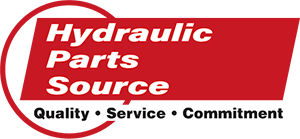3 Ways to Align a Hydraulic Pump
Many hydraulic pump failures are rooted in misalignment, when two shafts are not running on the same axis through the center. Misalignment causes 50% of the costs from breakdowns to rotating machinery, according to an article in Flow Control. Misaligned pumps also can consume up to 15% more energy than well-aligned pumps.
Knowing that, it becomes understandable why your end-user might approach you asking for advice on proper alignment in their hydraulic pumps.
Let's look at three commonly used methods to align hydraulic pumps.
Method #1: Straight Edge
This approach places a straight edge on the pump and coupling, and allows for a visual check to see if components are aligned. Feeler gauges help measure the gap at the top and bottom of the coupling, allowing for alignment by trial and error.This is the easiest and lowest cost approach, but straight edge is the least accurate and least likely to meet specifications. It's usually used for small pump/motor combinations that don't allow enough room to use more accurate methods. As high-performance machinery requires exact measurement, straight-edge alignment is used less and less.
Method #2: Dial Indicators
Dial indicators are key to several alignment methods. Usually, rim-and-face is used when one shaft can be rotated, cross dial takes shaft-to-shaft readings from two indicators mounted 180 degrees apart and reverse dial does the same except indicators are in the same plane.While they can give very accurate readings, dial indicators can be difficult to use, requiring a high level of technical competence. Precisely placed indicator stems are necessary to avoid errors. Reading errors also occur through coupling backlash, looseness and indicator bracket sag. Another inconvenience is removing and reinstalling dial indicators after each adjustment, which is necessary when collecting critical measures such as feet and coupling values.
Method #3: Laser Alignment
Laser alignment is the most accurate method available. This method uses lasers and optical sensors to determine shaft positions. It then relates this information to the computer, creating precise recommendations for adjustments. This method is more expensive than the straight edge and dial indicator approach, but laser alignment offers significant advantages over time. Reduced friction and energy use, lower levels of vibration and noise and longer lasting bearings, seals, shafts and couplings can help reduce costs in the long term.3 Key Benefits of Laser Alignment
Laser shaft alignment offers a number of advantages, but three stand out:- Benefit 1 - Vision and gravity do not affect laser beams
- Benefit 2 - Some laser alignment systems have programs that will measure and correct other shaft alignment issues, such as soft foot, bolt bound or base bound conditions
- Benefit 3 - You can store the corrected alignment values digitally for maintenance records

